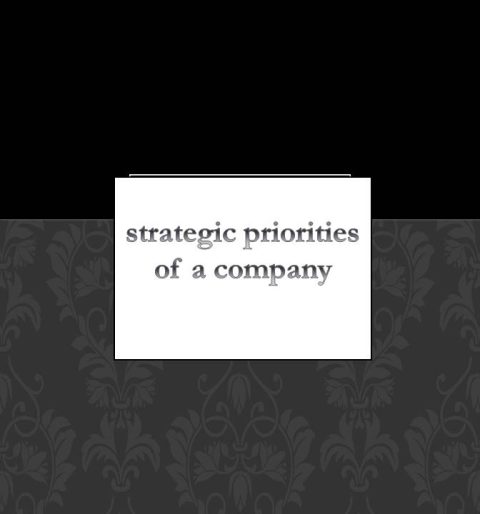Introduction:
Motivation and leadership in management are not just buzzwords but pillars that support the growth and success of any organization. Leaders who understand and harness the power of motivation can cultivate high-performing teams, drive innovation, and steer their organizations towards unparalleled success.
Motivation and leadership in management:
Motivation and leadership in management are pivotal for organizational success. Effective leaders inspire and guide their teams, fostering a culture of motivation that drives performance. By understanding the dynamics of motivation and leadership in management, organizations can cultivate high-performing teams and achieve sustainable growth.
1- Leadership Motivation: A Guide to Cultivating Better Leaders
Leadership motivation goes beyond traditional management roles. It involves not only motivating oneself but also inspiring and guiding others towards shared goals. Effective leaders understand the importance of maintaining their motivation and instilling it in their teams.
-
Exploring the Concept of Leadership Motivation
Leadership motivation is the driving force behind a leader’s actions and decisions. It involves having a clear vision, staying resilient in the face of challenges, and inspiring others to give their best. Understanding this concept is crucial for anyone aspiring to be an influential leader in their organization.
-
How Motivation Plays a Pivotal Role in Effective Leadership
Motivation is the catalyst for effective leadership. Leaders who can motivate themselves and others create a positive and productive work environment. Motivated teams are more likely to overcome obstacles, embrace challenges, and achieve exceptional results.
A- Motivating Oneself as a Leader
Self-motivation is the foundation of leadership. Leaders need to continuously find ways to stay motivated, whether through setting personal goals, seeking professional development, or maintaining a positive mindset. This self-motivation serves as an example for the entire team.
B- Inspiring and Guiding Others
Leadership motivation extends to inspiring and guiding team members. Effective leaders understand the unique strengths and aspirations of each team member, tailoring their approach to bring out the best in everyone. This involves effective communication, active listening, and leading by example.
2- The Difference Between a Manager and a Leader
While the terms “manager” and “leader” are often used interchangeably, they represent distinct roles within an organization.
-
Defining the Roles of a Manager and a Leader
Managers are primarily responsible for overseeing tasks, processes, and resources to ensure the efficient functioning of the team or department. On the other hand, leaders focus on inspiring and influencing their teams to achieve a shared vision.
-
Analyzing the Unique Qualities That Distinguish a Leader from a Manager
A- Visionary Mindset
Leaders possess a visionary mindset, seeing beyond day-to-day operations to envision the future of the organization. They inspire others by articulating a compelling vision that aligns with the values and goals of the team.
B- Relationship-Building Skills
Leaders excel in building strong relationships within the team. They understand the importance of trust, collaboration, and mutual respect, fostering a positive and inclusive work culture.
3- Key Traits of a Motivating Leader
Motivating leaders exhibit specific traits that set them apart in the realm of leadership.
-
Discussing Essential Leadership Qualities
Leadership qualities such as effective communication, empathy, and adaptability are crucial for motivating teams. These traits create an environment where team members feel valued and supported.
-
Understanding the Impact of These Traits on Team Motivation
A- Communication Skills
Effective communication is the cornerstone of leadership motivation. Leaders who can clearly articulate their vision, provide constructive feedback, and actively listen to their team members foster a culture of open communication and trust.
B- Emotional Intelligence
Leaders with high emotional intelligence understand and manage their own emotions while empathizing with others. This trait enables them to navigate challenges, resolve conflicts, and build strong connections with their team.
4- How to Motivate Others as a Leader
Motivating others is a skill that leaders can cultivate through intentional actions and strategies.
-
Practical Tips for Inspiring and Motivating Team Members
A- Set Clear Expectations
Clearly communicating expectations and goals helps team members understand their roles and contributions to the overall success of the organization. This clarity enhances motivation by providing a sense of purpose.
B- Recognize and Celebrate Achievements
Acknowledging and celebrating individual and team achievements reinforces positive behavior and fosters a sense of accomplishment. Recognition can take various forms, from verbal praise to tangible rewards.
-
Real-Life Examples of Successful Leadership Motivation
Examining real-life examples of leaders who have successfully motivated their teams provides valuable insights. Companies like Google and Apple are often cited for their leadership motivation strategies, creating innovative and thriving work environments.
5- Let Leadership Motivation Carry You Forward
Leadership motivation is not a short-term strategy but a mindset that can shape the long-term success of individuals and organizations.
-
Examining the Long-Term Benefits of Cultivating Motivated Leaders
Organizations that prioritize leadership motivation experience higher employee satisfaction, lower turnover rates, and increased productivity. Motivated leaders contribute to a positive workplace culture that attracts and retains top talent.
-
How Motivation Contributes to Organizational Success
Motivated leaders drive innovation, foster collaboration, and inspire teams to go above and beyond. This culture of motivation ripples throughout the organization, creating a dynamic and resilient workforce that adapts to challenges and embraces change.
6- What Are the Types of Leadership Motivation?
Leadership motivation takes various forms, each aligning with different leadership styles.
-
Exploring Various Approaches to Leadership Motivation
Leaders may adopt transformational, transactional, or servant leadership styles, each with its unique approach to motivation. Understanding these approaches allows leaders to tailor their strategies to the specific needs of their teams.
-
Identifying Strategies That Align with Different Leadership Styles
Leadership motivation strategies can include goal setting, mentorship programs, and team-building activities. Adapting these strategies to align with the chosen leadership style enhances their effectiveness.
7- What Is the Motivation Theory of Leadership?
Motivational theories provide frameworks for understanding how leaders can inspire and influence their teams.
-
Delving into Prominent Motivation Theories
Theories like Maslow’s Hierarchy of Needs, Herzberg’s Two-Factor Theory, and Vroom’s Expectancy Theory offer insights into the psychological and social factors that drive motivation. Leaders can leverage these theories to tailor their motivational approaches.
-
Applying Motivational Theories to Leadership Practices
Understanding the nuances of motivational theories enables leaders to create targeted and effective motivation strategies. The example, recognizing the importance of intrinsic motivation can guide leaders in fostering a sense of purpose and fulfillment among team members.
8- Why Is Motivational Leadership Important?
The impact of motivational leadership extends beyond individual and team success.
-
Discussing the Broader Impact of Motivational Leadership on Teams and Organizations
Motivated teams are more likely to collaborate, innovate, and surpass expectations. This positive energy creates a ripple effect, enhancing overall organizational performance and contributing to sustained success.
-
Real-World Examples of Companies Benefitting from Motivational Leadership
Companies like Zappos, known for its unique corporate culture, attribute their success to motivational leadership. By prioritizing employee happiness and motivation, Zappos has become a trailblazer in the e-commerce industry.
9- 7 Leadership Motivation Activities to Try at Your Workplace
Motivating a team involves more than just words; it requires actionable strategies that foster engagement and enthusiasm. Here are seven practical leadership motivation activities to implement in your workplace:
A- Team-Building Exercises
Engage your team in activities that promote collaboration and communication. This can range from outdoor team-building adventures to indoor workshops that encourage problem-solving and camaraderie. By creating a positive and supportive team environment, you enhance motivation and strengthen interpersonal relationships.
B- Goal-Setting Workshops
Empower your team by facilitating workshops that focus on individual and collective goal setting. Encourage team members to articulate their personal and professional aspirations, aligning them with organizational objectives. This not only provides a sense of purpose but also enhances motivation as individuals see the direct impact of their efforts.
C- Recognition Programs
Implement a recognition program that acknowledges and celebrates achievements, both big and small. Regularly highlight individual and team accomplishments to reinforce positive behavior. Recognition can take various forms, including verbal praise, certificates, or even small tokens of appreciation. This cultivates a culture of acknowledgment, boosting motivation and job satisfaction.
D- Mentorship Initiatives
Establishing mentorship programs within the workplace creates opportunities for experienced team members to guide and support their colleagues. This not only facilitates knowledge transfer but also fosters a sense of belonging and professional development. Mentorship activities contribute to a motivated workforce by providing guidance and encouragement.
E- Skill Development Workshops
Invest in your team’s professional growth by organizing skill development workshops. These sessions can focus on enhancing both technical and soft skills, empowering team members to expand their capabilities. As individuals acquire new skills, they feel a sense of personal and professional growth, contributing to increased motivation.
E- Flexibility and Wellness Programs
Promote work-life balance by introducing flexible work arrangements and wellness initiatives. Recognize the importance of employee well-being and provide opportunities for relaxation and rejuvenation. This not only shows a commitment to your team’s health but also boosts morale and motivation.
F- Innovation Challenges
Encourage creativity and problem-solving by organizing innovation challenges. These can involve brainstorming sessions, or idea competitions. Providing a platform for team members to contribute innovative solutions fosters a sense of ownership and excitement, driving motivation through active participation.
Implementing these leadership motivation activities creates a dynamic and inspiring workplace culture, ultimately resulting in a motivated and high-performing team. Regularly assess the impact of these initiatives through feedback and engagement metrics to tailor them to the unique dynamics of your team.
10- The Link Between Leadership Motivation and Retention
Motivational leadership significantly influences employee retention rates.
-
Analyzing How Motivation Influences Employee Retention
Motivated employees are more likely to feel satisfied and engaged, reducing the likelihood of turnover. Organizations that prioritize leadership motivation create an environment where employees are eager to contribute and grow.
-
Strategies for Creating a Motivating Work Environment
Promoting work-life balance, offering professional development opportunities, and recognizing employee contributions are key strategies for creating a motivating work environment. These factors contribute to employee satisfaction and long-term retention.
11- How Is Leadership Motivation Linked to Manager Effectiveness?
The effectiveness of a manager is closely tied to their ability to motivate and lead.
-
Examining the Correlation Between Leadership Motivation and Managerial Success
Managers who prioritize motivation create high-performing teams and foster a positive work culture. This, in turn, enhances their effectiveness in achieving organizational goals and overcoming challenges.
-
Case Studies Illustrating the Impact of Motivational Leadership on Managerial Effectiveness
Case studies showcasing successful managers underscore the tangible advantages of prioritizing motivation leadership skills. These examples vividly illustrate how focusing on motivational leadership can lead to enhanced team dynamics and heightened productivity. They serve as compelling evidence of the transformative impact that motivational leadership can have on organizational success.
Conclusion:
In the ever-evolving realm of management, the synergy between motivation and leadership in management goes beyond mere concepts; it stands as fundamental principles shaping the triumphs of both individuals and organizations. Grasping the intricate interplay between motivation and leadership becomes imperative for aspiring leaders and seasoned managers alike. By fostering motivational leadership in the context of management, organizations can forge a culture marked by excellence, innovation, and enduring success. This dynamic approach not only propels individual and team accomplishments but also lays the groundwork for organizational achievements in the broader landscape of management.
FAQ:
1- Why is Motivation an Important Leadership Skill?
Motivation is a crucial leadership skill as it drives individuals and teams towards shared goals. A motivated leader can inspire and guide their team, fostering a positive work culture that leads to increased productivity, innovation, and overall success.
2- What Are Motivation Skills?
Motivation skills refer to a leader’s ability to inspire and encourage individuals or teams. These skills encompass effective communication, recognition of achievements, goal setting, and the capacity to create a work environment that fosters enthusiasm and commitment.
3- What is the Best Motivation for a Leader?
The best motivation for a leader often stems from a combination of intrinsic and extrinsic factors. Intrinsic motivation, driven by personal satisfaction and fulfillment, is complemented by extrinsic factors like recognition, rewards, and a supportive work environment. A balance of both ensures sustained leadership motivation.
4- What Are the Ten Motivation Skills for Effective Leadership?
- Effective Communication: Clear and inspiring communication fosters understanding and motivation within the team.
- Recognition and Acknowledgment: Regularly acknowledging individual and team achievements reinforces positive behavior.
- Goal setting: Empowering team members to set and achieve goals provides direction and purpose, enhancing motivation.
- Adaptability: Leaders who adapt to changing circumstances and challenges inspire confidence and motivation.
- Empathy: Understanding and empathizing with team members’ perspectives fosters a supportive and motivated work environment.
- Delegation: Effectively delegating tasks and responsibilities empowers team members, promoting motivation and skill development.
- Continuous Learning: Leaders who value ongoing learning and development set an example, encouraging a culture of motivation.
- Flexibility: Providing flexibility in work arrangements supports work-life balance, contributing to sustained motivation.
- Innovation: Encouraging and recognizing innovative thinking fosters a culture of creativity and motivation.
- Resilience: Leaders who exhibit resilience in the face of challenges inspire confidence and maintain motivation within the team.






